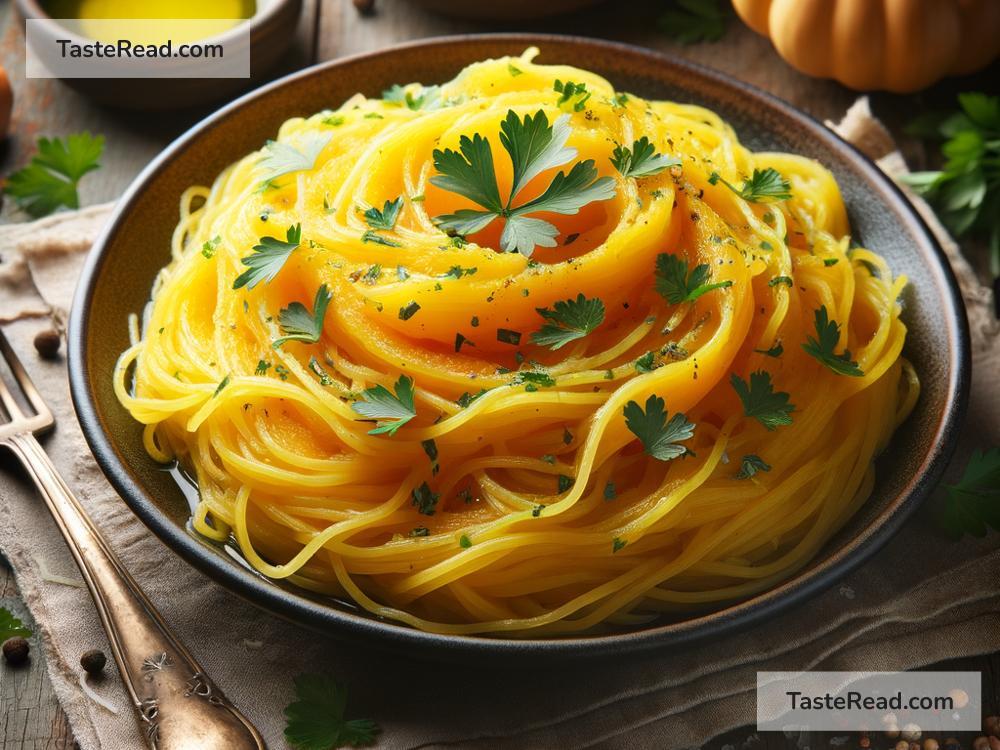The Curious Texture of Spaghetti Squash When Cooked
When it comes to vegetables, spaghetti squash is truly one of nature’s surprises. Known for its mild flavor and unique texture, this winter squash has earned its place in kitchens around the world. But, what truly fascinates food lovers is the transformation it undergoes once cooked – from a seemingly ordinary vegetable to a bowl of golden strands that resemble spaghetti noodles. In this article, we’ll explore the curious texture of spaghetti squash, why it behaves the way it does, and how to make the most of this delightful vegetable.
What Is Spaghetti Squash?
Spaghetti squash is a type of winter squash that looks like a small, oval melon. Its thick outer skin is usually yellow or pale orange, and inside, it holds seeds surrounded by light-colored flesh. Before cooking, its flesh is firm and dense – completely unlike the long, noodle-like strands it becomes after being baked, boiled, or microwaved.
While it may not boast a strong flavor, spaghetti squash’s subtle taste and fascinating texture make it a favorite ingredient for those seeking healthier alternatives to pasta or rice. Once cooked, the squash’s flesh easily separates into thin, delicate strands that resemble spaghetti, hence the name.
The Magic Transformation: How Spaghetti Squash Changes When Cooked
At first glance, it’s hard to believe that a vegetable can miraculously turn into noodle-like strings. So, what’s going on inside spaghetti squash to create this trademark texture?
The secret lies in the structure of the squash’s flesh. Before cooking, spaghetti squash is composed of tightly packed cells held together by water and natural plant fibers. When heat is applied – whether by baking, boiling, steaming, or microwaving – the squash’s flesh softens. The heat causes the natural cell walls to relax, loosening their grip on one another.
What makes spaghetti squash special is the way the fibers in its flesh are arranged. Instead of spreading randomly, the fibers grow in a parallel, ribbon-like pattern. This means that when the squash is cooked, these ribbons pull apart easily, creating the thin, stringy texture we recognize as spaghetti-like strands. Other vegetables don’t have the same fiber arrangement, which is why they don’t produce this noodle effect.
How to Cook Spaghetti Squash
If you’ve never cooked spaghetti squash before, don’t worry – it’s one of the easiest vegetables to prepare. Here’s a simple step-by-step guide to get you started:
-
Choose a ripe spaghetti squash. Look for one that feels firm, has bright yellow or orange skin, and feels heavy for its size.
-
Cut the squash in half. Carefully slice it lengthwise using a sharp knife. Be sure to use caution, as the skin and flesh are quite tough when raw.
-
Scoop out the seeds. Use a spoon to remove the seeds and the stringy bits attached to them. (You can save the seeds for roasting, similar to pumpkin seeds, if you like!)
-
Cook the squash.
- Baking method: Preheat your oven to 400°F (200°C). Place the squash halves face-down on a baking sheet, and roast for 35–45 minutes until fork-tender.
- Microwave method: Place one half (cut-side down) in a microwave-safe dish with a bit of water. Cover and microwave for 8–12 minutes.
-
Boiling method: Submerge the squash halves in boiling water for 20–30 minutes.
-
Scrape and enjoy! Once cooked, remove the squash from the heat, and let it cool for a few minutes. Using a fork, scrape the flesh from top to bottom, and watch as the strands naturally separate into spaghetti-like strings.
What Does Cooked Spaghetti Squash Feel Like?
The texture of spaghetti squash is often described as tender, yet slightly firm – similar to al dente pasta. Its strands are thin and delicate, with just enough bite to hold their shape without breaking down into mush. Unlike traditional noodles, spaghetti squash has a bit of a crunch, but it’s not overwhelming. The light and fibrous texture make it ideal for soaking up sauces and flavors, making every bite enjoyable and satisfying.
Some people love spaghetti squash for exactly this reason: it offers a pasta-like experience, but with a healthier twist. Because it’s low in carbohydrates and packed with vitamins and fiber, it’s a perfect choice for anyone trying to eat lighter or incorporate more veggies into their meals.
How to Enjoy Spaghetti Squash
Cooked spaghetti squash can be enjoyed on its own, seasoned simply with salt, pepper, and a drizzle of olive oil. However, its mild taste makes it an excellent base for a variety of dishes. Here are a few ideas:
- Toss it with marinara sauce and meatballs for a healthier take on spaghetti night.
- Mix it with garlic butter, parmesan cheese, and fresh herbs for a light, flavorful side dish.
- Layer it in casseroles, or use it as a base for baked dishes like spaghetti squash lasagna.
- Add it to stir-fries or soups for added texture and nutrition.
The Verdict: A Texture Worth Trying
Few vegetables are as fascinating as spaghetti squash. Its signature texture – soft, stringy, and noodle-like – makes it stand out in the crowded world of produce. Whether you’re trying to eat healthier, stay gluten-free, or simply enjoy something new and fun, cooked spaghetti squash is a delicious and versatile option. So next time you’re at the grocery store, grab one, and discover the curious texture of spaghetti squash for yourself!


